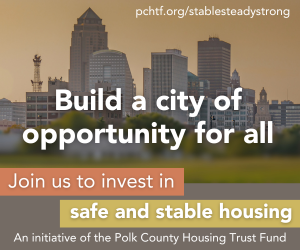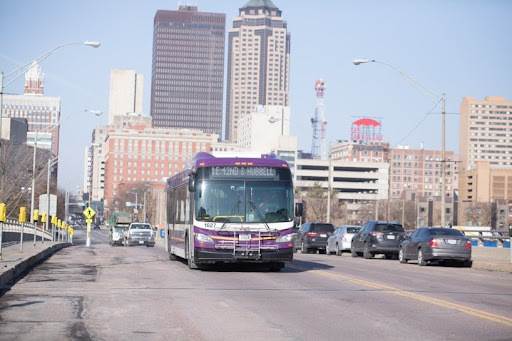New report shows economic impact of arts and culture on Central Iowa

Nonprofit arts and cultural organizations and events contribute nearly $310 million a year to the Central Iowa economy, according to a report released last week.
The report, the result of a survey done in partnership with Americans for the Arts, looked at the economic impact of arts and culture on the region in 2022, including jobs, wages and salaries and the amount of tax revenue generated by the sector.

Sally Dix, executive director of Bravo Greater Des Moines, said the data contained in the report help tell the story of how important the arts and culture sector is to the community.
“Arts and culture are often aligned with quality of life, and that’s an important part of the role the sector plays,” she said. “But we have to work harder to get the data out about economic impact. It’s a really critical part of the story of why … the sector is a critical asset for the strength of our region. The economic impact is measurable. It’s important. It provides critical context to the story we’re trying to tell about social impact, and it’s a unique role Bravo plays to be able to support research like this to elevate the sector.”
Americans for the Arts worked with Des Moines and 373 other communities across the country, including nine others in Iowa, to compile the data.
Dix said that the overall impact of more than $309.9 million is a lot of money, but that people should also pay attention to the number of jobs (more than 5,400) supported by the sector. She noted that the sector generates nearly $67 million a year in local, state and federal tax revenue.
“It busts that myth that nonprofits, particularly arts and culture, are just taking public funds when in fact they are really generating and contributing quite a lot to the public sector,” she said.
The report also shows that more than $208 million is paid in salaries and wages within the sector.
Other findings from the report:
- More than 3.7 million people attended arts and culture events.
- There was more than $147.7 million in event-related spending.
- Overall average spending per person per event totaled nearly $40, including food and drink, retail shopping, one-night lodging and local transportation, among other spending.

Greg Edwards, president and CEO of Catch Des Moines, said the data is important to his organization because arts and cultural events play a major role in how Catch Des Moines sells the region to visitors.
“It’s important data that we can further analyze and help with our future marketing of some of these events … and sell the metro for conventions, sporting events and even leisure travelers,” he said.
Edwards said the data contained in the report is important for the community as it looks to attract and retain talent.
“Our business community is fully supportive of arts and culture and tourism, so I think it’s important for them to see that,” he said. “They look at arts and culture specifically as retaining employees and as leverage to recruit new employees from out of state, so it’s very important for them as well.”

Anne Shimerdla, CEO of Blank Park Zoo, said the survey shows that the nonprofit and arts and culture sector are important economic drivers in the region.
She said one metric that stood out to her was the number of people coming from outside the area to attend events in Central Iowa.
According to the report, more than 1 million people traveled from out of the area to visit attractions or attend events in the community in 2022.
Shimerdla said businesses can tap into the data as a tool for talent attraction and retention.
“Communities that have strong arts and culture components to them usually are more attractive to recruit outside talent,” she said.
Shimerdla said the tax support metric also helps demonstrate how the sector is giving back to the community.
“This really looks at again at how it’s contributing to the overall economic impact of the community itself,” she said. “So, by bringing in tourism, by having people spend their dollars when they are here, by generating tax money that goes back to the community, I think it’s a message that many people don’t think about.”
Dix said 179 organizations and programs in the region contributed data for the report.
“The depth and breadth of the organizations and cultural sector is enormous, and I just don’t think people understand the robustness of what is available in our community,” she said.
And, while she’s proud of the economic data, Dix said, it’s important “not to lose sight of the social impact that arts and culture has in our community.”
“It brings people together. It provides a sense of belonging, it inspires creativity,” she said. “Those are also really important stories. They’re just a little harder to measure than the economic piece. I don’t want people to forget there are two sides to this coin, and we have a lot to be proud of either way.”

Michael Crumb
Michael Crumb is a senior staff writer at Business Record. He covers real estate and development and transportation.









